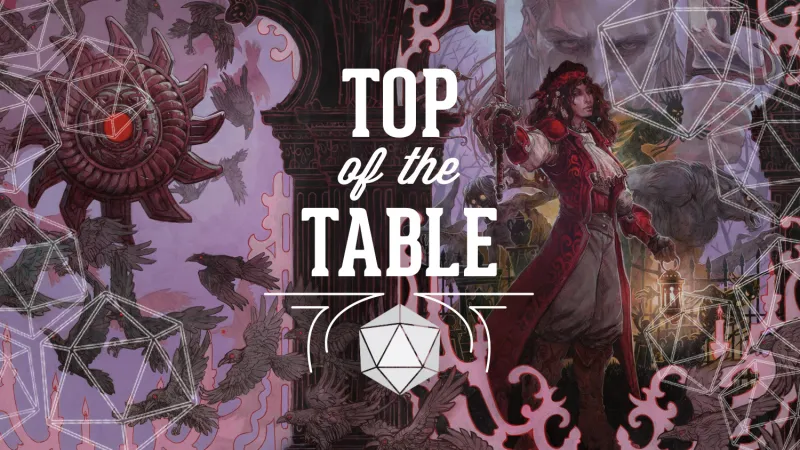
Like the prior year, 2021 turned out to be unusual for the tabletop role-playing hobby. Many gaming groups began or continued to play remotely over video, while others made tentative steps back into in-person get-togethers. But regardless of the extenuating circumstances affecting weekly playgroups, publishers continued to release a bevy of superb new game systems, setting books, adventures, and supporting products.
Below are 10 of the very best RPG products of 2021. To discover more awesome tabletop games of all kinds, including lists featuring the best board games of this year or the top games from previous years, feel free to peruse our entire Top of the Table hub. And don't miss this feature's companion article, highlighting the Best Board Games of 2021.

Alice Is Missing
Publisher: Renegade Game Studios
Undoubtedly one of the most innovative and surprising role-playing games in recent memory, Alice Is Missing is a silent role-playing game for 3-5 players, meant to be experienced in a single gameplay session of two to three hours. Emotionally sophisticated and demanding that its players embrace and play out their roles, this is a memorable and heartbreaking story about the disappearance of a high school girl named Alice, exploring both its effect on those she knew and unraveling what actually happened.
Instead of a traditional GM and players structure, Alice Is Missing encourages all players to take on one of the main characters. Still, one player does need to understand the rules and facilitate the advancement of play. Instead of speaking to each other, the entire game is conducted via a group text message thread, where clues gradually come together, and players act out their character’s emotional arcs. To say much more would spoil the experience.
Alice Is Missing (which arrived in December last year, too late for consideration in that year’s list) is an incredible short-form RPG that tests the boundaries of the medium. And while it would likely win praise in any year because of its innovative format, it’s an especially appealing game for 2021, as its emotional core has a cathartic quality for anyone confronting loss, and its structure virtually encourages remote play.
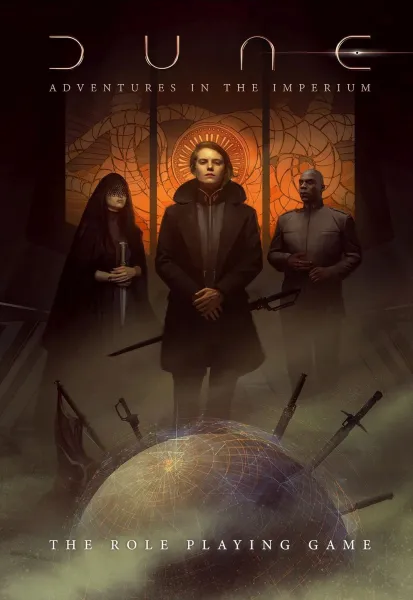
Dune: Adventures in the Imperium
Publisher: Modiphius
Modiphius has repeatedly made good use of its excellent and adaptable 2d20 gaming system, tweaking and overwriting notable features to customize its playstyle for a variety of big licenses, including Star Trek, Conan, and Fallout. This year, the studio’s take on Frank Herbert’s Dune universe was especially impressive, offering a framework to play out games of open warfare, spycraft, political espionage, and more.
Players take on the role of the members of one of the noble Houses of the Imperium, navigating the many conflicts and machinations that might help to move your faction into greater power and control. An interesting dynamic at play allows players to control both the macro-level decisions of steering their House, but then dive down into the nitty-gritty combats and infiltrations that enact those plans.
The 2d20 system maintains its core identity; namely, players roll two d20 dice to resolve most tasks. Extra successes help fuel momentum for future tasks, but at the risk of increasing threats. One of the most exciting additions this time is the focus on a character’s drive (think: motivation) on fueling their success or failure, which really helps to instill that inimitable “Dune” feeling of characters pushed forward by their own irresistible urges, honor, or motives.
Dune: Adventures in the Imperium features a wealth of setting information and a beautiful presentation. Whether as a longtime fan, or a new fan recently wowed by the latest film, you’re likely to enjoy the deep dive into lore. But this is also a complex and challenging game to navigate, so be ready for an uphill learning climb if you’re an RPG newcomer.
D&D Icons of the Realms Miniatures
Publisher: Wizkids
This list rarely veers from actual games, adventures, or settings to highlight a specific supporting product line for RPG play. But WizKids deserves accolades for its phenomenal year of new pre-painted miniatures. The Icons of the Realms line has been active for some time, but this year brought a huge range of exciting miniatures. Extensive mini-lines supported individual products like The Wild Beyond the Witchlight and Curse of Strahd, but we also saw massive premium sets like the Yawning Portal Inn and even the five-headed dragon queen herself, Tiamat.
Across the board, WizKids has made strides in detail and paint application and offered intriguing gimmicks, like specific minis that combine to form a larger figure, such as a mount and rider. In response to fan demand, we’ve seen some especially striking large-scale figures, including those ever-coveted dragon minis. WizKids has also found success by mixing releases of mainstay monsters and characters alongside unusual surprises, keeping each new line feeling fresh and intriguing.
Many role-playing fans still prefer classic theater-of-the-mind play without tactical miniatures. At the other end of the spectrum, some miniature hobbyists still prefer unpainted minis to complete themselves (which WizKids also offers). But for the vast majority of players, plastic pre-painted line-ups hit the sweet spot for enhancing tabletop play, and WizKids’ recent work in that regard is simply excellent.
2021’s Icons of the Realms line-up gets a nod for the sheer breadth of amazing individual miniatures on offer, but it’s worth noting that WizKids’ other pre-painted miniature lines, including their Pathfinder Battles, Starfinder Battles, and Warlock dungeon tiles, all offer similar levels of quality and polish. It’s an excellent time to be a miniature enthusiast.
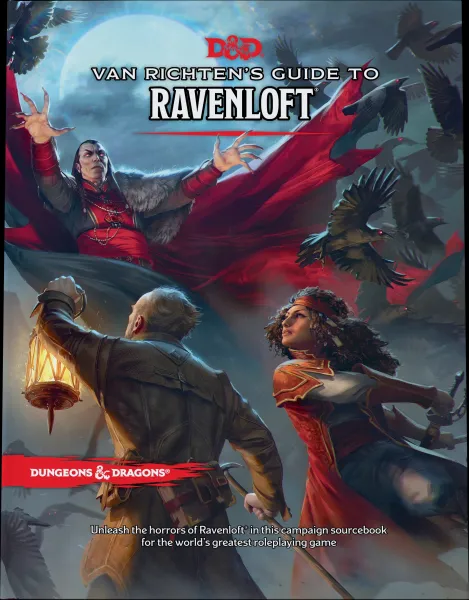
D&D: Van Richten’s Guide To Ravenloft
Publisher: Wizards of the Coast
The booming popularity of the world’s original role-playing game continues to astound, especially for longtime fans who remember the days when admitting to being a player was tantamount to social exile. But there’s no denying that the 5th Edition of D&D is going strong, appealing in equal measure to weekend gaming groups and massive streaming entertainment options.
Wizards of the Coast continues to capitalize on that success with some top-notch rules and setting expansions. The most exciting addition of 2021 was Van Richten’s Guide to Ravenloft. A very old D&D campaign setting brought to new life, Ravenloft offers everything players need to tell stories of horror, gothic adventure, paranormal investigation, and tense monster hunts.
For most fans, the biggest treat will be detailing the various Domains of Dread. Each of these locales acts as a sort of walled garden themed around particular horror tropes, from post-apocalyptic zombie survival to lycanthrope murder mysteries to Lovecraftian madness. In many ways, you can think of these a bit like a bunch of mini-settings under the broader banner of Ravenloft, with the ability to move characters between them as the DM sees fit.
But there’s also some exciting other content to discover, including new player options like the dhampir lineage, new monsters such as the delightfully creepy and doll-like carrionettes, and a haunted house-themed mini adventure to get you started. In a year filled with some tremendous new D&D supplements, Ravenloft brought the well-deserved return of one of the oldest and best.
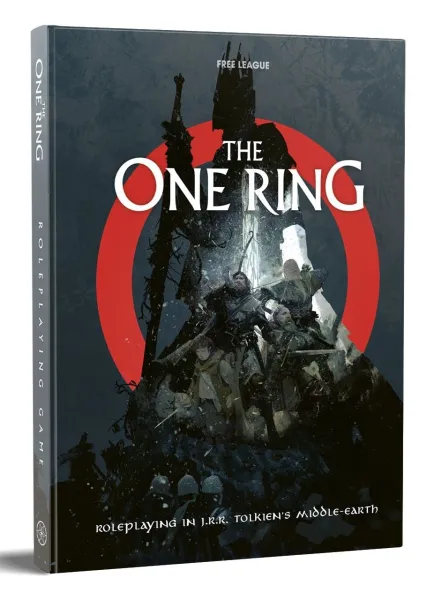
The One Ring: 2nd Edition
Publisher: Free League Publishing
Years of anticipation and disappointing delays have led to the triumphant new edition of the classic Lord of the Rings role-playing game, with a late release that's just starting to reach gamers. Following in the tradition of decades of RPGs attempting to adapt Tolkien’s setting, this new version of the excellent The One Ring hits some very high notes, balancing the narrative richness of Tolkien storytelling with the need for some concrete structure to ground play. The result is a unique system that captures part of the magic that has so enraptured fans for decades, set in a period that tells the story following the events of The Hobbit but before Frodo’s journey begins in The Lord of the Rings.
Even after all these years, there’s a distinct style to Tolkien’s writing that sets itself apart from other fantasy novels, and it’s clear that the game designers recognize that distinction and are trying to capture it here. There’s a focus on the journey and the small moments of wonder and discovery between big battles or encounters. That manifests as two distinct phases of play. The adventuring phase plays out as exciting scenes of encounters and exploration. In contrast, the Fellowship phase focuses on the characters’ lives in moments between the big adventure, but are nonetheless important to the story – think the Fellowship’s time resting in Rivendell.
Alongside that play structure, a streamlined set of rules features mostly abstracted combat and other encounters and uses a clever dice resolution system (optionally using custom themed dice). A wonderful character creation system focuses on distinct cultures and backgrounds and how they come together to face the Enemy’s looming threat.
As a whole, The One Ring: 2nd edition manages to capture something special about the vibe of Tolkien storytelling that is distinct from other fantasy settings. For fans of the books or movies, it’s a refreshing and rewarding game.
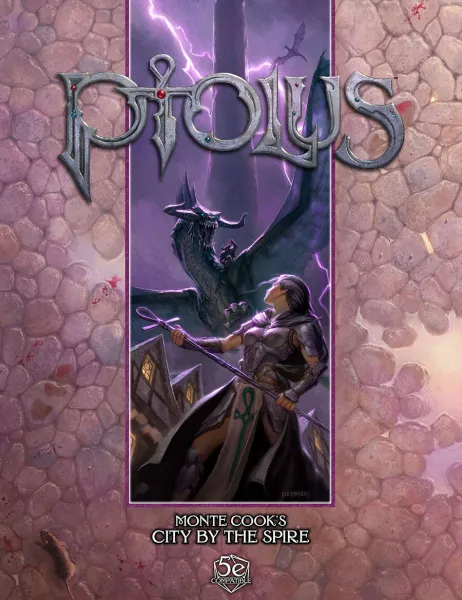
Ptolus: Monte Cook’s City By The Spire
Publisher: Monte Cook Games
In recent years, Monte Cook Games has pursued an interesting strategy, crafting some of its RPG books in two distinct formats. One utilizes its internal (and excellent) Cypher System ruleset, and the other capitalizes on the popularity of the familiar 5E D&D rules. Whichever format you prefer, Ptolus is one of the biggest and most richly fleshed-out settings and adventures you could imagine. It offers what could add up to years of play sessions in one incredibly massive tome, allowing for exploration of a vast city and its environs.
These two new versions of Ptolus are reworks and rewrites of a popular experience by the same name from back in 2006 after Ptolus came to life as the setting for Monte Cook’s home game, played by several other RPG luminaries of the time. Now, with years more reflection and refinement, it’s a sort of master class in RPG city and adventure design.
At nearly 700 pages (plus another 300 pages of included downloadable content), you’re unlikely to run out of material to run with your gaming group. Thankfully, Ptolus is very well organized and indexed, making it remarkably easy to navigate for a busy GM.
As a play experience, Ptolus offers a wide variety of flavors. From dungeon delving into the catacombs beneath the city or the spire that looms overhead, to political and factional intrigue in the streets, fleshed out by an array of thoughtfully imagined NPCs. Simply put, Ptolus is an overwhelming treasure trove of adventures and secrets. It is perfect for gaming groups looking for a campaign to dig deep into a particular locale and its many individuals and groups.
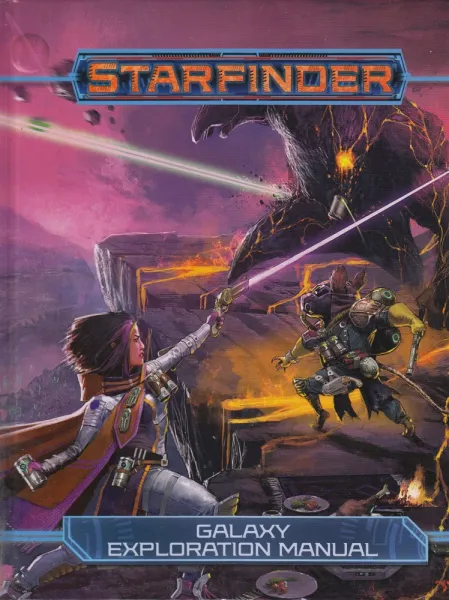
Starfinder: Galaxy Exploration Manual
Publisher: Paizo
The core rulebook release of Starfinder provides an intriguing conceit; advance the fantasy setting of Paizo’s Pathfinder universe thousands of years into the future so that fantasy magic and sci-fi tech collide in a boundless outer space setting. The game has steadily expanded since its launch in 2017, but the new Galaxy Exploration Manual is one of the best ways the game has grown.
The core rulebook discussed a whole galaxy of worlds to explore, but its main focus was on a central star system and its various planets and factions. The Galaxy Exploration Manual exists to help gaming groups who want to venture beyond those familiar locations go on genuine missions of discovery.
The main focus here is on providing tools for GMs to build bespoke worlds for the players to uncover, and the game does so in an organized and engaging way. The 12 distinct biomes described can be customized and developed, and further rules help you build interesting cultures, technologies, religions, and more for the denizens of that visited place.
Of course, we also get a bunch of great new character options, including good stuff for all the classes in the game, new equipment, and even new activities for far-flung galactic explorers to tackle in their downtime. The original Starfinder game release laid a remarkable base. Still, for many gaming groups, the Galaxy Exploration Manual will turn out to be the other half of the puzzle that opens up the style of play they really want.
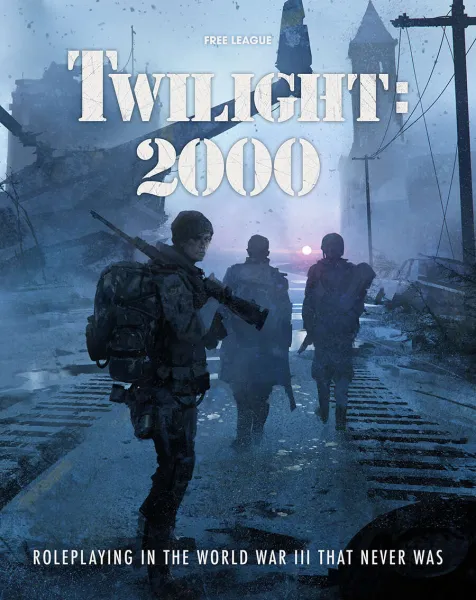
Twilight: 2000
Publisher: Free League Publishing
Twilight: 2000 traces a circuitous path through the history of the RPG hobby, but prior editions always offered a satisfying departure from the standard fantasy fare that dominates so many gaming tables. This latest edition borrows heavily from Free League’s existing expertise, in particular, borrowing the core Year Zero ruleset that has served that publisher’s games so well. But even with the new approach to rules, the developers have maintained a focus on core themes and feel of play that has always defined this game.
Set in an alternate history of the year 2000, players take on the role of soldiers or civilians trapped in a corner of Europe after the Cold War (which never ended) resulted in a nuclear exchange between America and the Soviet Union. In the aftermath, survivors face a bleak and tense landscape of exploration and endurance in the dark days of World War III.
Following in the footsteps of the excellent fantasy-themed Forbidden Lands RPG from Free League, Twilight: 2000 plays as a sandbox role-playing experience. Players explore a vast map and gradually uncover a landscape of adventure, even while carefully trying to gather enough ammo and supplies to stay alive for another day. When the large-scale map exploration leads to inevitable conflict, the game turns to a satisfying tactical structure that leverages the nuanced but understandable rules system to great effect.
Twilight: 2000 manages that rare feat of being nostalgic, yet also fresh and exciting. For a gritty departure from standard role-playing experiences, it’s well worth a look.
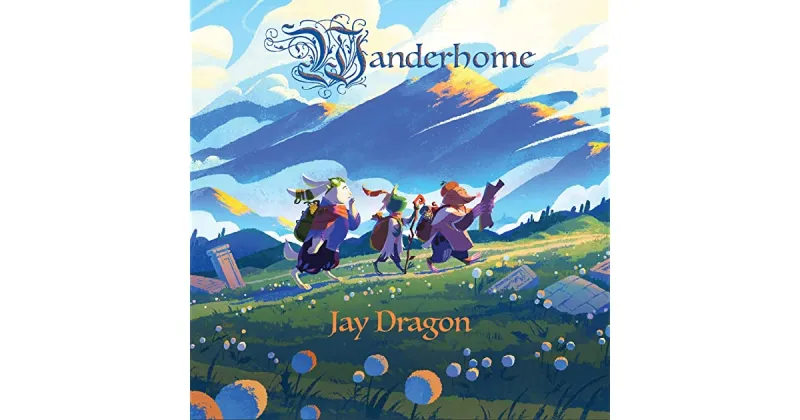
Wanderhome
Publisher: Possum Creek Games
If you’ve had enough of violence and killing in your game nights, perhaps you’d enjoy a heartwarming adventure about anthropomorphic animals building communities and helping each other? That’s the draw of the lovely Wanderhome, a diceless and GM-less role-playing game all about crafting a shared narrative in a quiet and pastoral setting.
Players take on the role of animals with distinct goals and natures. You could call them classes, but these “playbooks” are far more freeform than that, casting you as the “exile,” “caretaker,” or “poet,” as they move through distinct seasons of the year, weaving together a story that links the characters together and helps define the surrounding community.
Without a GM guiding the action, the system uses tokens to let you steer the action, gaining them for enriching the story in a fun way and spending them to resolve something in the manner you’d like to see it addressed.
Wanderhome isn’t without possible danger, and interpersonal conflict certainly plays into the experience. Still, as a rule, the game is much more interested in friends telling a structured story together rather than getting your heart pumping with an extensive combat scene. We could all use a little beauty and idyllic natural settings in our lives, and adorable talking animals have a pretty universal appeal. If that simplicity and focus on joy and beauty sounds especially good right now, track down a copy of Wanderhome right away.
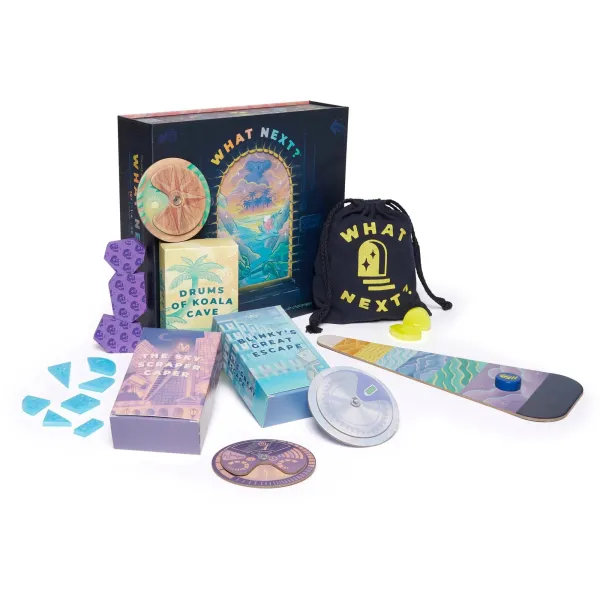
What Next?
Publisher: Big Potato
We’re used to thinking of role-playing games as big, complex systems that support imaginative narrative play and exciting encounters, but role-playing experiences can be all sorts of things – including a party game. At least, that’s the explicit goal of What Next?, a charming release that ably walks the line between RPG, board game, and party experience, all rooted in storytelling.
Players make their way through one of three replayable stories, all structured roughly like choose-your-own-adventure tales. Players debate and consider the path forward through the story as they make their way through these (often silly) narratives. As you encounter problems in the story, you’re asked to undertake a multitude of challenges, which come together through a variety of strange components included with the game. These are usually some variation of dexterity challenges, like stacking pieces or flicking a wooden disc to a specific location. Players cheer each other on, work their way through the adventure at hand, and ultimately laugh about how it all resolves before starting over again with a different (or the same) scenario to see how it plays out this time.
What Next? is the opposite of the epic and rules-heavy role-playing systems that characterize the hobby, and it’s a game that can easily be tackled piecemeal when you have free time. It’s even a family-friendly game. And while the included scenarios will eventually run their course, there’s enough laughter and fun at hand that you won’t mind replaying them.
We’ve got dozens of tabletop gaming recommendations to discover in our Top of the Table hub, including everything from asymmetric strategy board games to family game night options. If you’re struggling to decide the right role-playing, board, card, or miniature game to bring to your next game night, don’t hesitate to drop me a line, and I’ll do my best to offer some individualized recommendations!
Source: Game Informer
Comments
Post a Comment